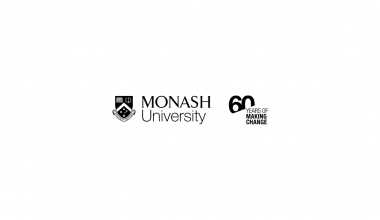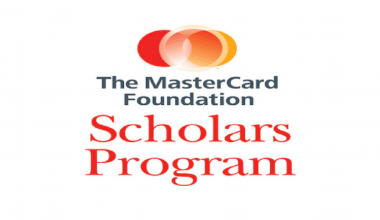MIT Transfer Acceptance Rate is very rigid. Hundreds of local and international students try to transfer to MIT yearly. About 20 make it, and few would drop out, maybe because of MIT transfer tuition fee or other variables, and of course, the Massachusetts Institute of technology fees can be overwhelming.
Those lucky students have proven qualified at their respective colleges and have decided to come to MIT seeking new challenges. For some, the Institute is just about everything they dreamed of.
Others find the change to MIT’s academic requirements and stressful lifestyle difficult. They all give up institutions that may have been easier, social, or even closer to home to accompany the rest of the students.
Table of contents
THE ROAD TO MIT, TRANSFER MODE, TRANSFER ACCEPTANCE RATE
What is MIT Transfer Acceptance Rate?
The MIT Transfer Acceptance Rate Ranges from 6% to 10.2% based on the data from MIT Associate Admissions Director McGregor Crowley
MIT transfer acceptance rate is not easier or less rigid than the normal freshman admission rate. As hard as it can be to get into MIT, it’s even more difficult to transfer in.
He was sure he knew why he didn’t get in: He had gotten his GED at 17 but never graduated high school. Then he sent his applications when he was 22, after spending about 5 years off school. After his rejection, he took up at New York University, hoping and planning to transfer to MIT later.
Sabine Schneider, now in course 7, says her good grades in the college and the relationships she built with her teachers at St. John’s University helped her transfer to MIT Irrespective of Massachusetts Institute of technology fees and other requirements.
Though her application was rejected the first time, her teachers at St. John’s Suggested that she should reapply.
It was a hard decision for Schneider to move. After being rejected at MIT, she invested in life at St. John’s. She didn’t want to kill herself over what could have been but didn’t.
It wasn’t easy to push herself up to fill out the transfer application.
But her doubts concerning MIT transfer acceptance rate were nowhere to be found when she heard that she had been offered a transfer admission.
Note: The Acceptance rate is just a number. You can get into MIT via transfer; even though the official MIT transfer rate is 6%, you can be among that 6%. Just apply!
MIT Medical School Acceptance Rate
A certain statistic has shown that 41% of MIT undergrads, grad students, and alums who applied to medical schools in 2014 were admitted.
Interestingly, if you are a medical student who wants to attend MIT medical school or any other medical school from MIT, I can tell you it won’t be difficult.
This is why:
The reason is that the grades are much more difficult to get than at state schools (schools like Berkeley and UCLA are exceptions), and very little credence is given to students from elite schools.
That said, once you get into Medical School, your MIT is more impressive than your medical school diploma, even if you come from Harvard or Johns Hopkins medical school.
So, in a nutshell, the overall national rate seems to be 32%, according to https://www.aamc.org/download/32.
MIT Computer Science Acceptance Rate
If you are looking forward to pursuing computer science at MIT, you’d need to know that admissions are extremely competitive, as the MIT acceptance rate is only 7%.
Some popular majors making waves in the school include Computer Science, Mechanical Engineering, and Mathematics.
They have a graduation rate of 94%, and MIT alumni earn a starting salary of $82,200.
MIT Transfer Statistics
It is said that more than 700,000 students transfer colleges every year. At MIT, 4.28% of the student body are transfer students, so if you want to transfer from your current school, you won’t be alone. Apply for your transfer now.
MIT Transfer Fee
Massachusetts Institute of Technology fees can vary across students, disciplines, etc. The cost of a normal 4-year education at many private universities is enough to make just about any student blanch.
The MIT transfer tuition fee differs from the Massachusetts Institute of technology fees. The only difference is that a fee of 75$ would be added to the MIT transfer tuition fee.
MIT Transfer Tuition Fee varies for an academic year; the normal tuition fees at MIT outside of Boston are $51,520. Add board and room, including other fees, is $70,240 annually. This is not different for transfer students, but an extra 75$ for the transfer application fee.
MIT Transfer Tuition Fee may vary with the normal fee. You pay the transfer application fee only in the transfer year. Thereafter, the transferring student pays the normal Massachusetts Institute of technology fees.
According to research by firm PayScale, the average professional who has an MIT diploma can expect a starting salary of $83,600. Even with the hefty tuition costs and other requirements, PayScale puts this great institution at No. 2 in private U.S. colleges regarding return on money invested for college.
MIT Acceptance Rate FAQS
Below are some of what you’ll need to apply for your transfer to MIT:
High School Transcript
College Transcript
Essay or Personal Statement
Standardized Test Scores
Statement of Good Standing from Prior Institution
MIT requires a minimum college GPA of 3.5 on a 4.33 point scale.
The decision dates usually falls within 1 May and 15 December each year.
Click here for more information
Recommendations
- 15 Best Engineering Schools in Virginia
- Postdoctoral Scholarship in Bioinformatics in Sweden,
- 21 Best East Coast Universities
- 15 Best Colleges for Computer Science in India.
- List of Top 50 Universities In The World
- Top 10 Universities To Study Accounting in the World
- Wentworth Tuition: Scholarships and Costs of Living
- Top 20 Music Schools in the World
- Universities in Brazil for International Students
- GIZ GmbH Internship opportunity -Germany
- 17 Best Architecture Schools in the World | Updated
- Universities in Brazil for International Students 2024-2024
- 2019 Massachusetts Institute of Technology Global Challenges for Entrepreneurs
- 21 Best Archaeology Schools, 2024 | Updated
DISCLOSURE: This post may contain affiliate links, meaning when you click the links and make a purchase, we receive a commission.






Comments are closed.